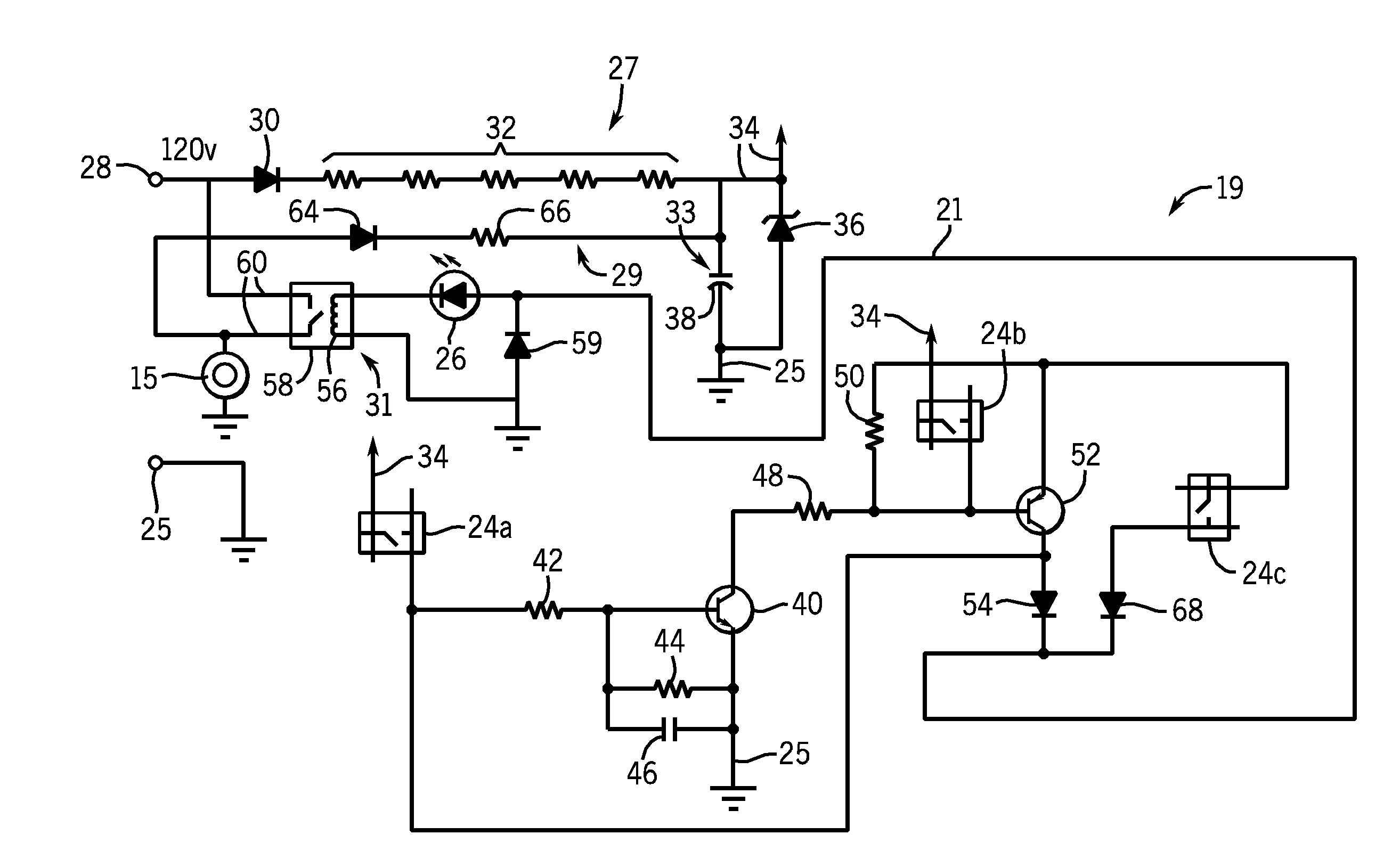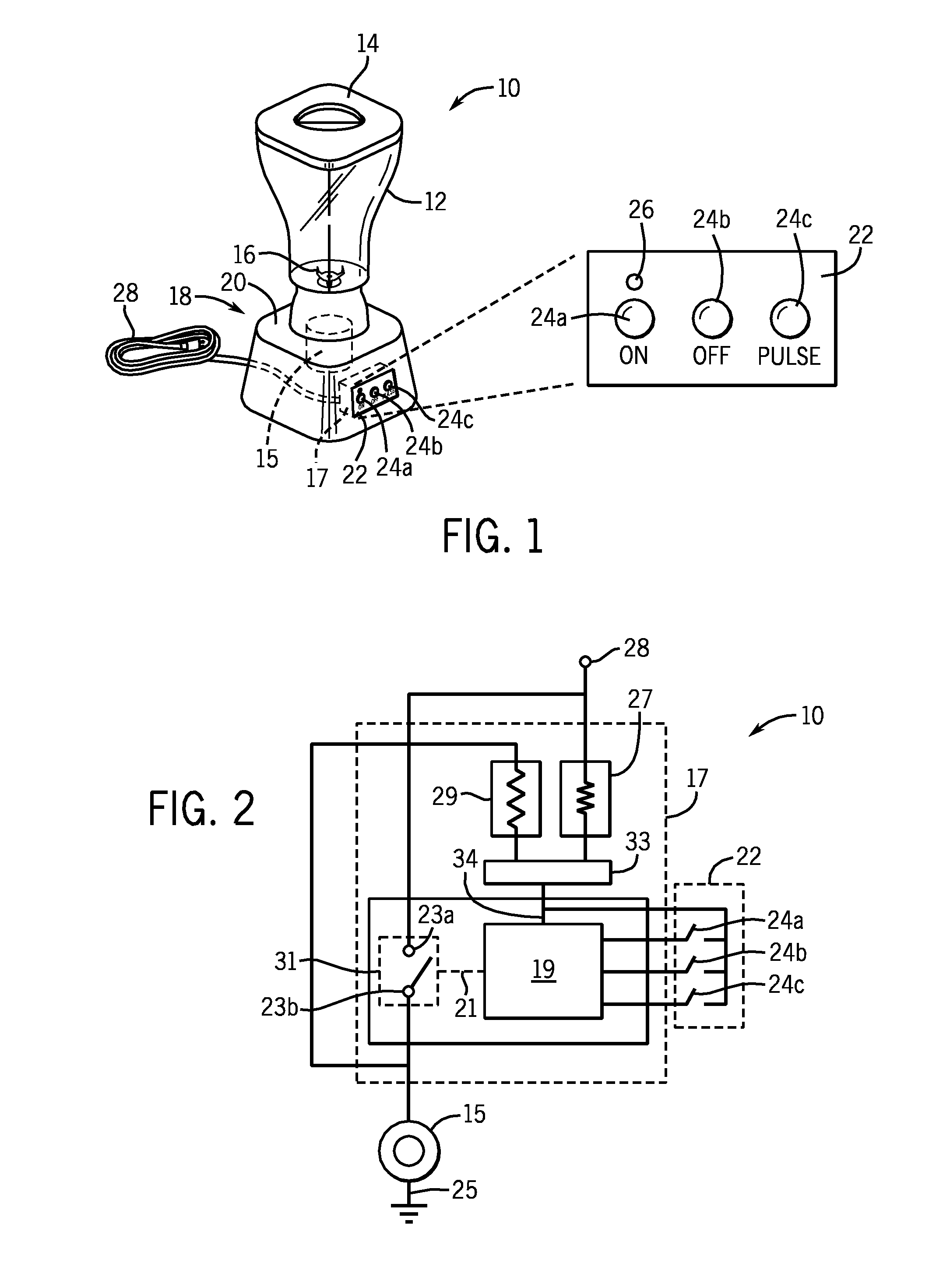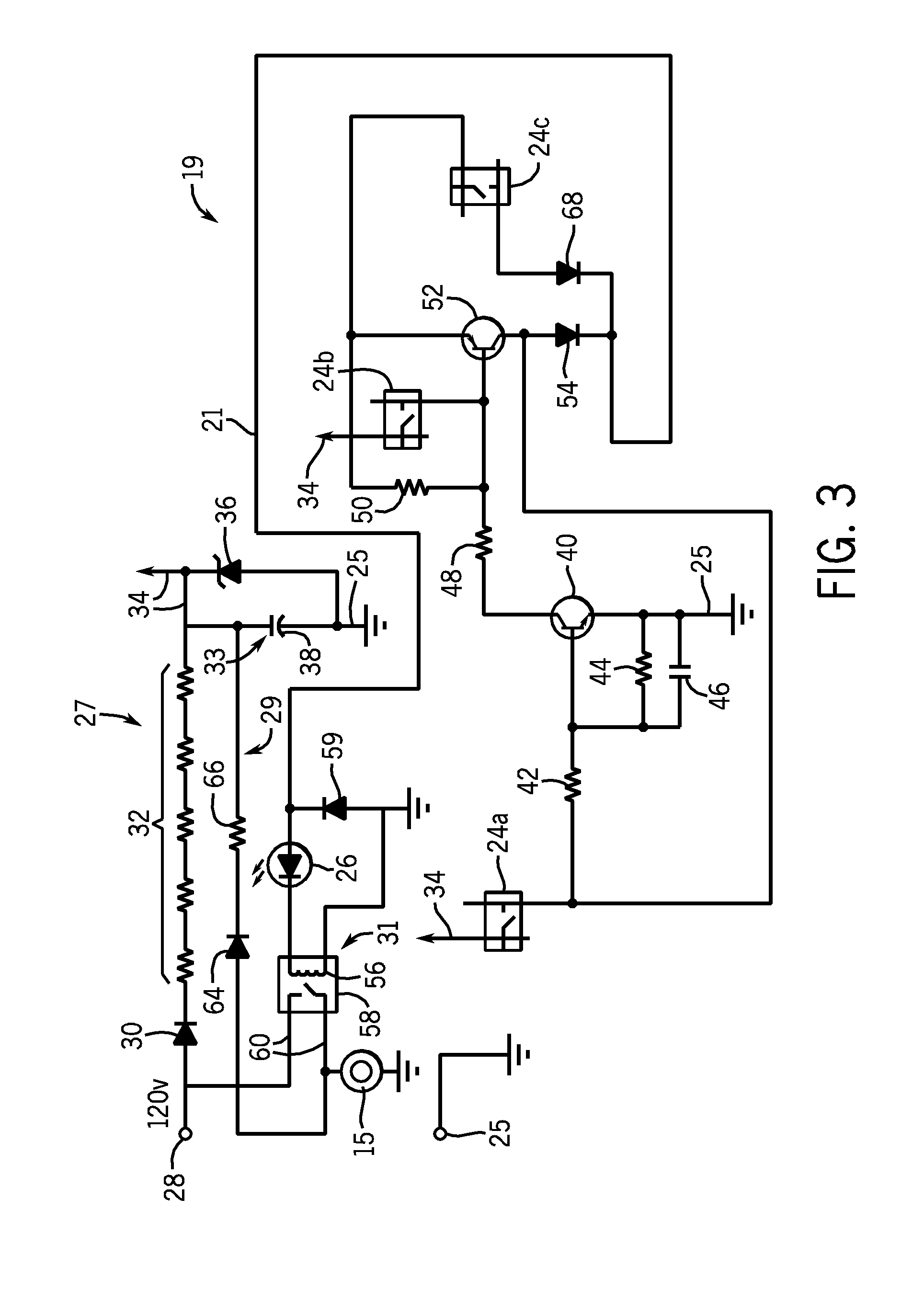Low cost blender control permitting low actuation force switches
- Summary
- Abstract
- Description
- Claims
- Application Information
AI Technical Summary
Benefits of technology
Problems solved by technology
Method used
Image
Examples
Embodiment Construction
[0024]Referring now to FIG. 1, a blender 10 may include a glass, plastic or metal blender container 12 typically having a removable lid 14 permitting foods (not shown) to be inserted in the container 12 and blended by an internally contained blender knife 16.
[0025]The blender container 12 may sit on top of a blender power unit 18 having a housing 20 containing a motor 15 and control electronics 17 to be described in more detail below. The front of the housing 20 may present a control panel 22 having a set of switches 24, preferably “tactile” type membrane switches, each providing momentary contact, single pole single throw operation and suitable for low-voltage control. As is understood in the art, such membrane type switches may include an outer membrane providing a hermetic seal against environmental contamination and may use contacts formed from printed circuit traces typically on at least one flexible membrane. Such membrane switches are low-voltage devices operating, for exampl...
PUM
 Login to View More
Login to View More Abstract
Description
Claims
Application Information
 Login to View More
Login to View More - R&D
- Intellectual Property
- Life Sciences
- Materials
- Tech Scout
- Unparalleled Data Quality
- Higher Quality Content
- 60% Fewer Hallucinations
Browse by: Latest US Patents, China's latest patents, Technical Efficacy Thesaurus, Application Domain, Technology Topic, Popular Technical Reports.
© 2025 PatSnap. All rights reserved.Legal|Privacy policy|Modern Slavery Act Transparency Statement|Sitemap|About US| Contact US: help@patsnap.com



